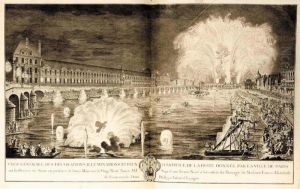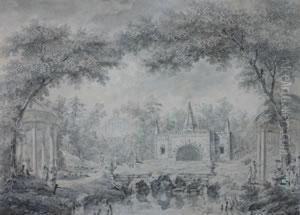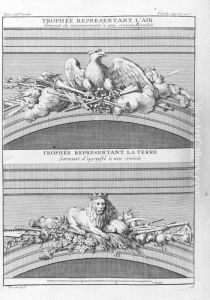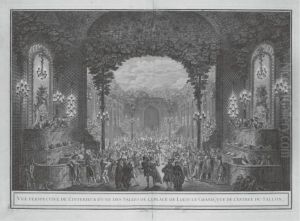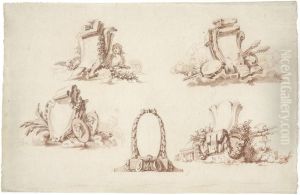Jacques Francois Blondel Paintings
Jacques Francois Blondel was a renowned French architect and educator, born in Rouen, France, in 1705. He came from a family with a strong architectural background; his uncle, Jean-François Blondel, was also a noted architect. Jacques Francois is often remembered for his contributions to the architectural theory of the Enlightenment as well as for his educational endeavors in the field of architecture.
Blondel initially studied in Rouen and later moved to Paris to further his education. He spent some time in Rome, which was typical for architects of his era, to study classical architecture. Upon his return to France, he began to establish himself as an architect and teacher. In 1743, he was admitted to the Royal Academy of Architecture in France, an institution that played a significant role in his career.
Throughout his life, Blondel was dedicated to teaching and the dissemination of architectural knowledge. In 1745, he founded his own school of architecture in Paris, L'École des Arts, which contributed to the education of a generation of architects. His teaching method was innovative for the time, combining theoretical lectures with practical training.
Blondel published several influential works on architecture, including the 'Cours d'architecture' (Course of Architecture) and 'Architecture françoise' (French Architecture), which helped disseminate French architectural ideas across Europe. His writings not only provided a comprehensive overview of the architectural practices of his time but also included his own designs, urban planning concepts, and discussions on the aesthetics of architecture.
Blondel's work had a significant impact on urban development in France. He participated in the planning and design of structures and spaces within cities, including the alignment of streets and the design of public squares. His ideas reflected the rationalism and classicism that characterized the Enlightenment period.
Jacques Francois Blondel died in Paris in 1774, leaving behind a legacy that influenced the development of neoclassical architecture in France and beyond. His educational approach and publications paved the way for future architects and urban planners, establishing standards and principles that would be embraced in the evolving discourse on architecture.
